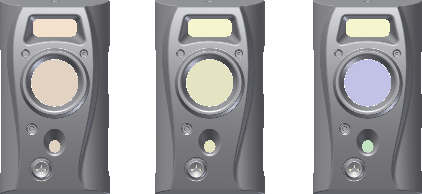Create a patching surface
Manually select, or automatically detect all internal patches in the plastic part.
- In the Core/Cavity tab, click Create Patching Surface.
- In the Create Patching Surface dialog box, choose Click to add to select edges manually, or select the Auto Detect button. Auto-detected patches are highlight on the part.
- If the position of the auto-detected patches is not suitable, in the
Create Patching Surface dialog box, do one of the following:
- Click All Upper or All Lower.
- Select one patch, click the pull-down menu on the Position box, and then click Upper or Lower.
- Select multiple patches, right-click them, and then click Upper or Lower.
Note: You can select Position only for auto-detected patches that have no draft angle. - If an auto-detected patch is not suitable, select it from the list, and then press the Delete key.
- To add a patch, click Click to Add, and then select edges in the graphics window.
- If the created patches are not suitable, select the patches and in the Option list, click Optional.
- Click OK.
Change the patching surface color

- In the Mold Design browser, right-click the top Patching Surfaces node, and then click Change Display Color to change the color of all patching surfaces.
- Alternately, right-click one or more child nodes, and then click Change Display Color to change the color of individual patching surfaces.
- In the Change Display Color dialog box, select a new appearance from the drop-down list.
- Click OK.
Edit a patching surface
- In the Mold Design browser, under Patching Surfaces, right-click a Surface Group node, and then click Edit Feature.
- In the Create Patching Surface dialog box, modify the parameters.
- Click OK.
Delete a patching surface
- In the Mold Design browser, under Patching Surfaces, right-click a Surface Group node, or a Patch node, and then click Delete.